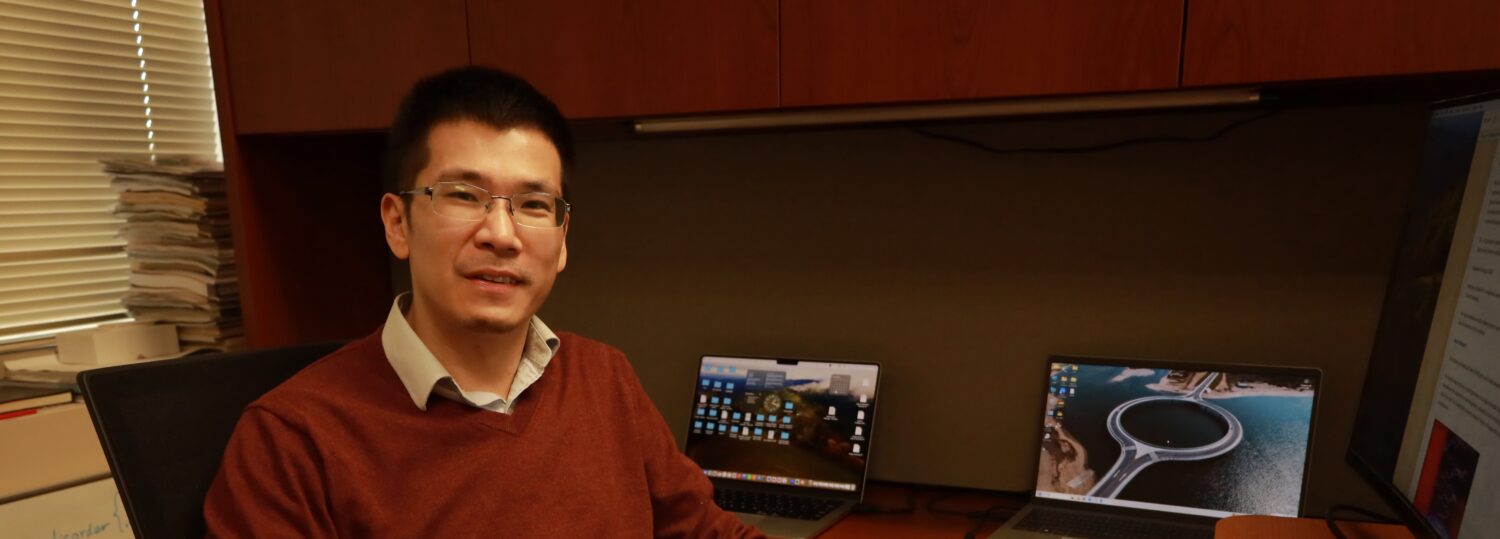Jun Liu, an associate professor in the Department of Mechanical and Aerospace Engineering (MAE) at North Carolina State University, has published two significant research papers exploring thermal transport mechanisms in polymer composites. These studies, featured in Science Advances and the ASME Journal of Heat and Mass Transfer, provide new insights into optimizing thermal conductivity in composite materials.
Reevaluating Defects: A New Perspective on Thermal Conductivity
The first paper, Defects Vibrations Engineering for Enhancing Interfacial Thermal Transport in Polymer Composites, published in Science Advances, challenges conventional assumptions about defects in composite materials. Liu’s team investigated the impact of defective fillers on thermal transport by comparing polymer composites with graphite (perfect fillers) and graphite oxide (defective fillers), using polyvinyl alcohol (PVA) as the matrix.
Their findings indicate that while defective fillers individually have lower thermal conductivity, their interaction with the polymer matrix enhances overall thermal transport. Specifically, PVA composites with defective fillers exhibited a higher thermal conductivity (~1.38 W m⁻¹ K⁻¹) compared to those with perfect fillers (~0.86 W m⁻¹ K⁻¹). This unexpected outcome is attributed to vibrational coupling at the polymer-filler interface, which facilitates more effective energy transfer.
Utilizing thermal transport measurements, neutron scattering, quantum mechanical modeling, and molecular dynamics simulations, Liu’s team demonstrated how these interfacial defects act as bridges for heat flow rather than barriers. The study, conducted in collaboration with Professor Yanfei Xu at UMass Amherst and Professor Mingda Li at MIT, leveraged national laboratory resources for comprehensive material analysis.
The Role of Polymer-Filler Interactions in Thermal Performance
Liu’s second study, Enhancing Thermal Transport in Polymeric Composites Via Engineered Noncovalent Filler–Polymer Interactions, published in the ASME Journal of Heat and Mass Transfer, shifts focus from fillers to polymer selection. The research examined how π–π stacking interactions between polymer chains and graphite fillers influence interfacial thermal resistance (ITR) and overall heat transfer efficiency.
Using polyethylene (PE) and polyaniline (PANI) as polymer matrices, Liu’s team found that PANI, which contains benzene rings, forms strong noncovalent π–π stacking interactions with graphite. This effect significantly reduced interfacial resistance and enhanced thermal transport. PANI/graphite composites showed a ~34.85% increase in thermal conductivity compared to pure PANI, while PE/graphite composites exhibited a ~22.82% increase. Molecular dynamics simulations confirmed that these π–π interactions promote better alignment of polymer chains with the graphite surface, improving heat transfer pathways.
This study builds on Liu’s prior research and was again conducted in collaboration with Xu’s group at UMass Amherst. Together, these findings offer a comprehensive strategy for optimizing both polymer and filler selection in composite materials, providing a pathway for improved thermal performance in applications such as electronics cooling, energy storage, and advanced manufacturing.
Future Implications
Liu’s research sheds new light on how molecular-level engineering can be used to enhance composite materials’ thermal properties. By demonstrating that defects and specific polymer-filler interactions can be leveraged to improve heat transfer, these studies pave the way for more efficient and adaptable thermal management solutions.
For more details, the full studies can be accessed via Science Advances here and the ASME Journal of Heat and Mass Transfer here.
